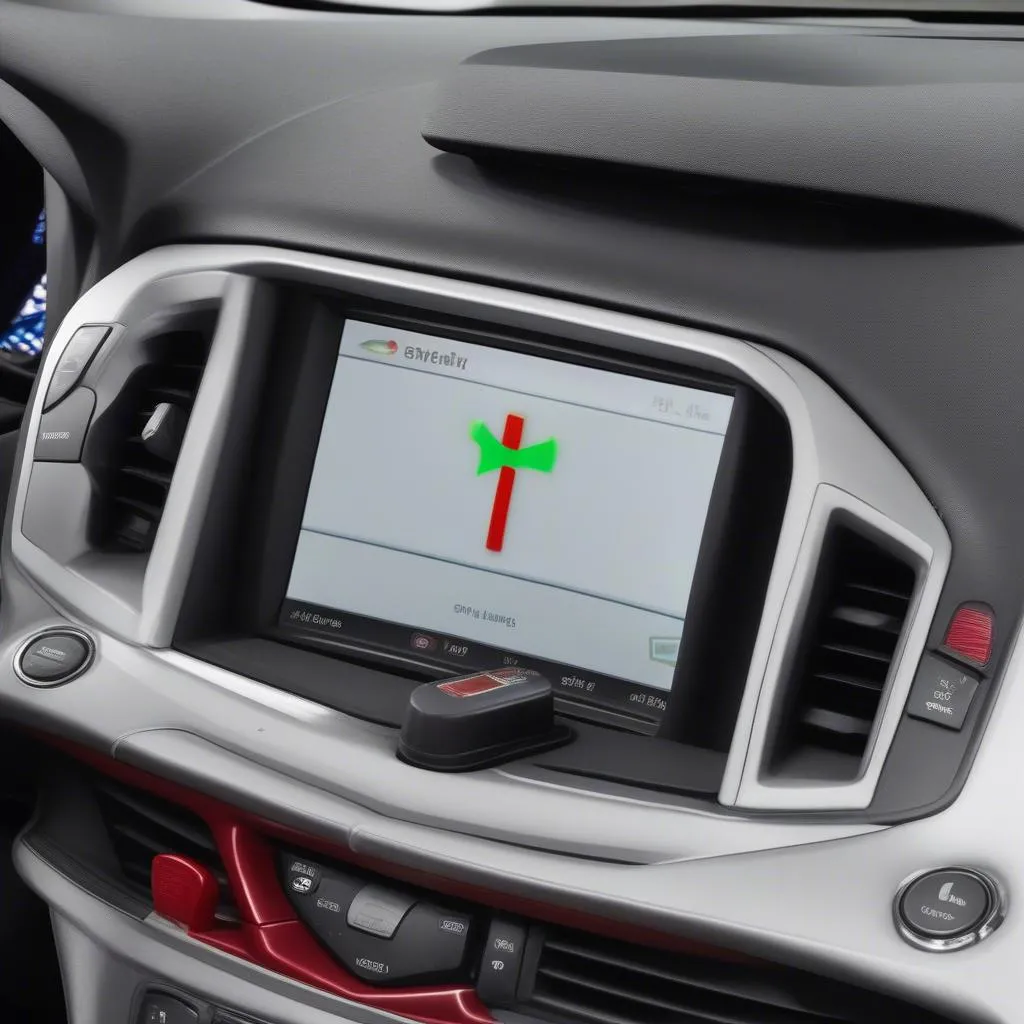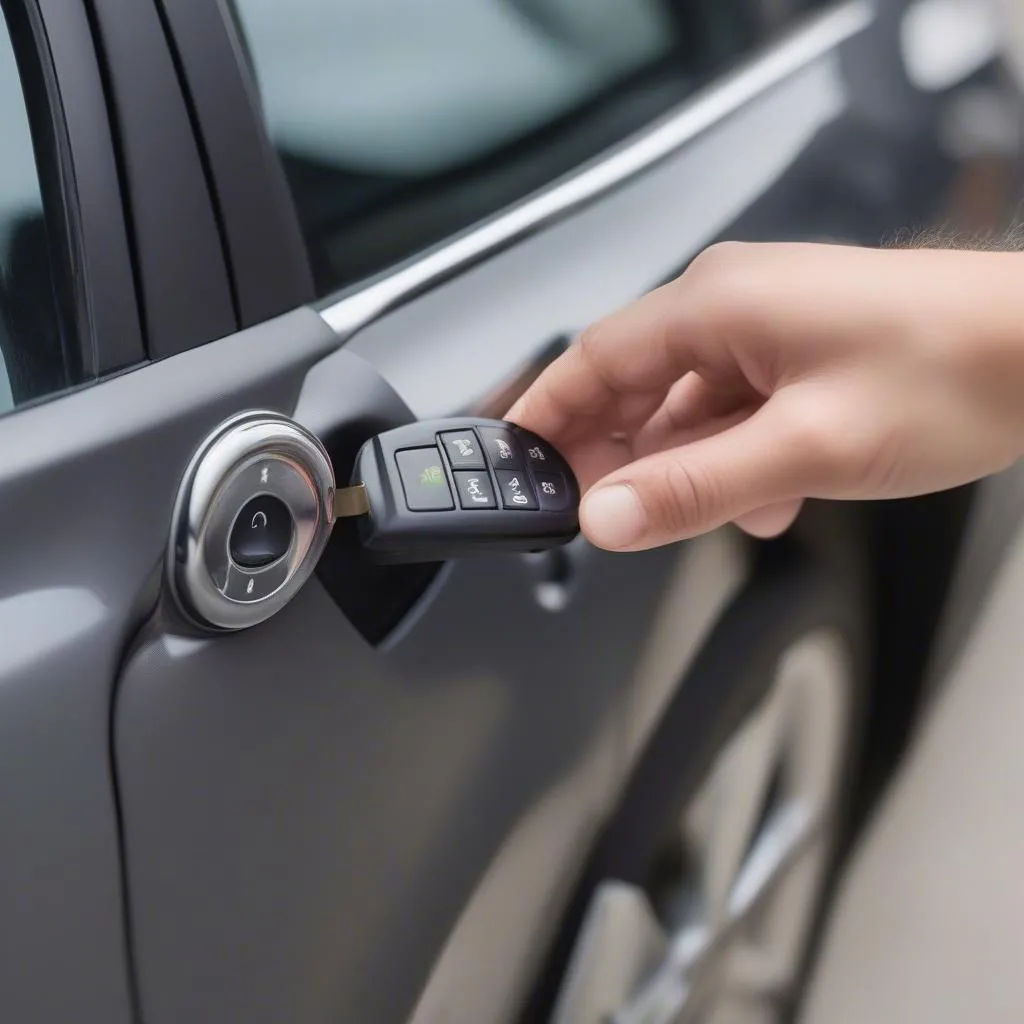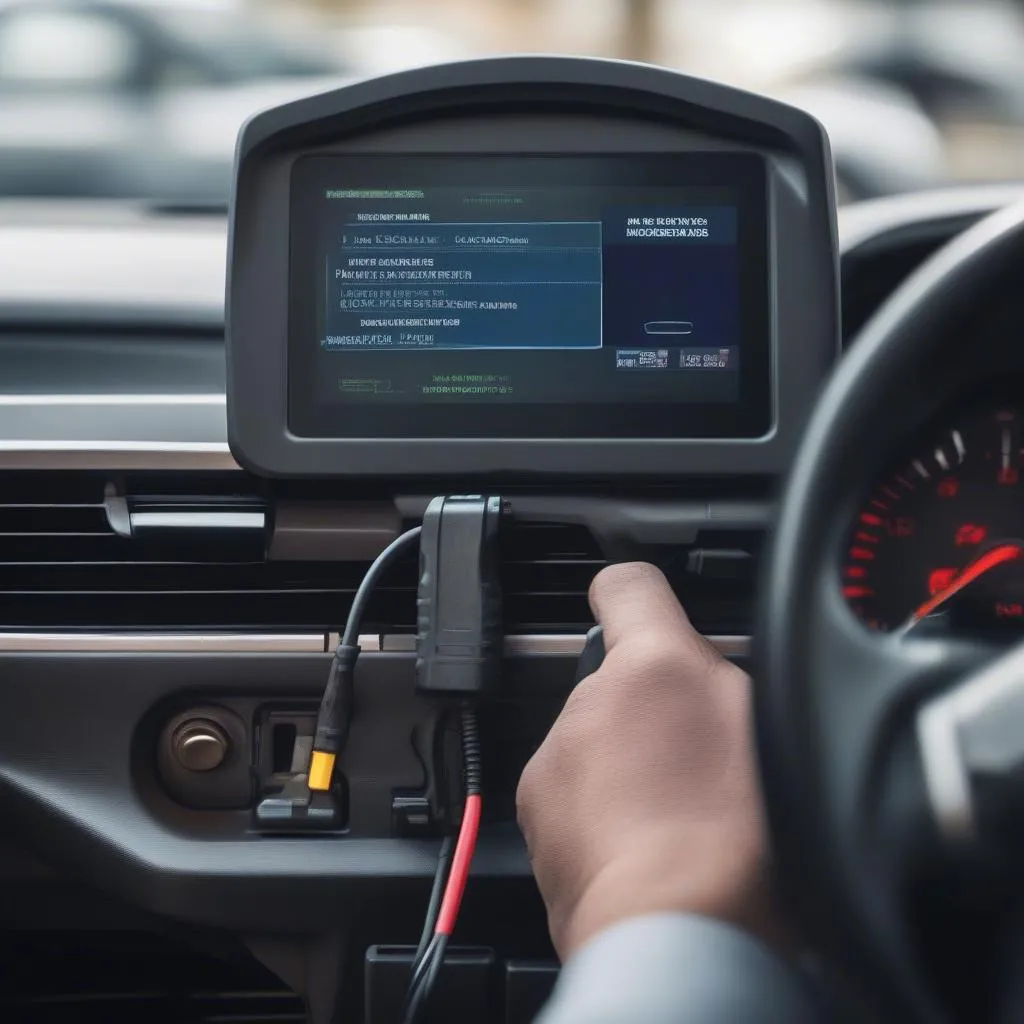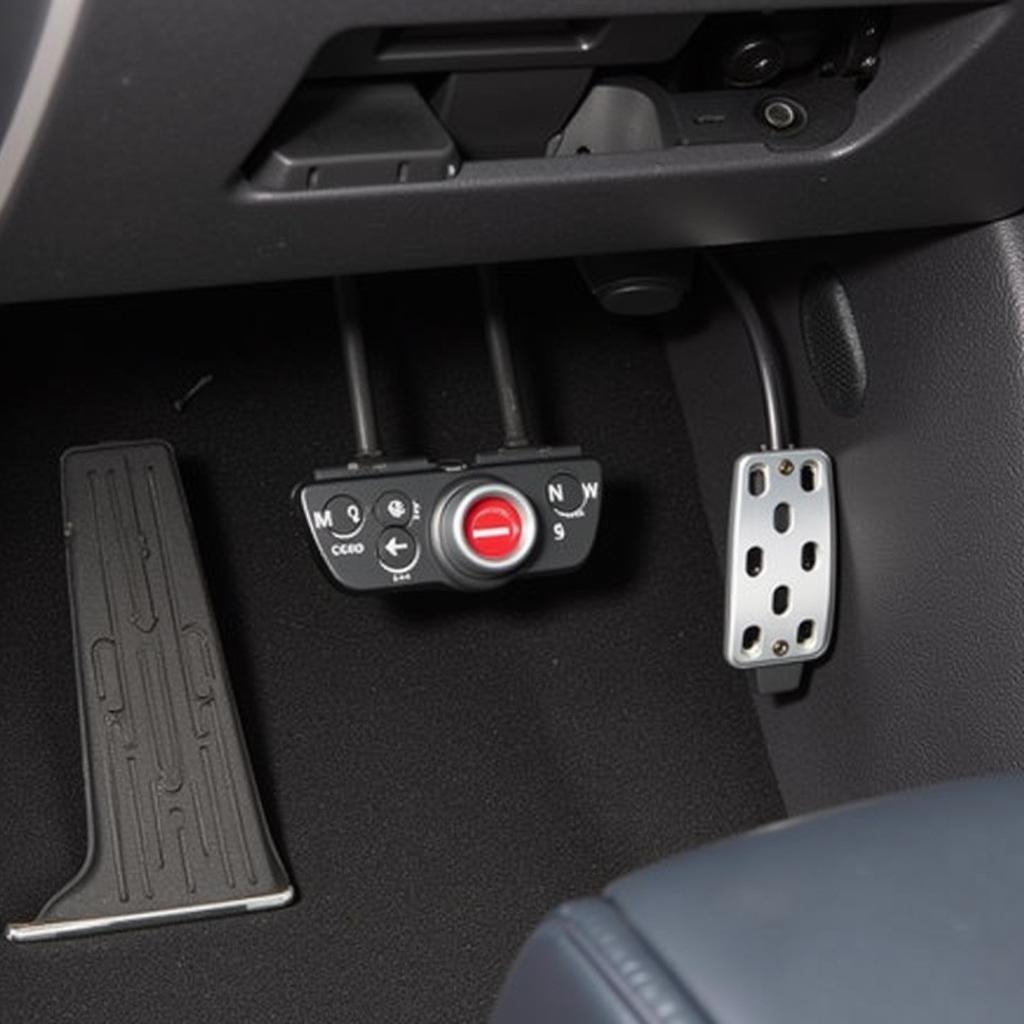Is your 2011 Chevy Cruze refusing to start? The culprit might be a triggered anti-theft system. This issue, while frustrating, is typically resolvable without a trip to the mechanic. This comprehensive guide will walk you through the process of resetting the anti-theft system on your 2011 Chevy Cruze, providing you with the knowledge and steps to potentially save you time and money.
Understanding the Anti-theft System
Before we dive into the reset process, let’s briefly understand how the anti-theft system works. This system is designed to deter theft by preventing the engine from starting if it doesn’t detect the authorized key. When you insert your key (or use the key fob), the system reads a chip within it. If the chip isn’t recognized, the anti-theft system assumes a potential theft attempt and takes action by disabling the starting mechanism.
Recognizing the Signs
How can you tell if a triggered anti-theft system is the reason behind your starting troubles? Here are a few telltale signs:
- Security Light: The most common indicator is a flashing or continuously illuminated security light on your dashboard. This light usually features a car icon with a key symbol or the word “security”.
- Engine Cranking but Not Starting: You might hear the engine cranking when you turn the key, but it fails to fire up.
- No Response from the Key Fob: If your key fob doesn’t unlock the doors or trigger any response from your vehicle, it could indicate an issue with the anti-theft system recognizing your key.
 Chevy Cruze Dashboard Security Light
Chevy Cruze Dashboard Security Light
What You’ll Need
Resetting the anti-theft system on your 2011 Chevy Cruze can often be done with simple tools you likely have at home:
- Your Chevy Cruze Key: Ensure you have the correct, programmed key for your vehicle.
- Patience: The process might take a few tries, so patience is key!
Step-by-Step Reset Guide
Here’s a straightforward approach to reset your 2011 Chevy Cruze’s anti-theft system:
-
Try a Different Key: If you have a spare key, attempt to start the car with it. Sometimes, the issue might lie with the key’s chip rather than the anti-theft system itself.
-
The “Lock-Unlock-Start” Method: This method involves a specific sequence using your key and door lock:
- Insert your key into the driver’s side door lock.
- Lock the door manually.
- Unlock the door manually.
- Repeat this lock-unlock cycle three to five times.
- Attempt to start the engine.
 Unlocking 2011 Chevy Cruze Door
Unlocking 2011 Chevy Cruze Door
- Disconnect the Battery: If the previous steps fail, disconnecting the battery for a few minutes can sometimes reset the system:
- Safety First: Ensure the engine is off and the parking brake is engaged.
- Locate the Battery: Open the hood and find the negative battery terminal (usually black and marked with a “-” sign).
- Disconnect: Use a wrench to loosen the nut on the negative terminal and carefully disconnect the cable.
- Wait: Let the battery sit disconnected for about 15-20 minutes.
- Reconnect: Reconnect the negative battery cable and tighten the nut securely.
- Test: Attempt to start your Chevy Cruze.
FAQs: Addressing Common Concerns
Q1: My Security Light is Still On After Trying These Methods. What Should I Do?
If the light persists, a deeper issue might need attention. This could involve a faulty key, a problem with the ignition cylinder, or a malfunctioning anti-theft module. In such cases, it’s best to consult a qualified mechanic or use professional-grade diagnostic tools.
Q2: Can I Use an OBD2 Scanner to Reset the Anti-theft System?
While some OBD2 scanners offer anti-theft system functionalities, it’s essential to use a scanner compatible with your Chevy Cruze’s make and model. Incorrect usage can potentially exacerbate the issue. For reliable diagnostics and programming, consider exploring the range of advanced diagnostic tools available at Cardiagtech.
 OBD2 Scanner Diagnosing Car Issue
OBD2 Scanner Diagnosing Car Issue
Q3: How Can I Prevent My Anti-theft System From Triggering Unnecessarily?
- Maintain Key Health: Avoid exposing your keys to extreme temperatures or moisture, which can damage the internal chip.
- Use Caution with Aftermarket Electronics: Installation of aftermarket car alarms or remote starters should be done by professionals to prevent conflicts with the factory anti-theft system.
Conclusion
A malfunctioning anti-theft system can be a significant inconvenience, but understanding how to address it empowers you as a car owner. While the steps outlined above can resolve many common issues, persistent problems often require more specialized diagnostics and solutions.
Remember, when it comes to complex automotive electronics, having the right tools and expertise is crucial. Explore the comprehensive range of automotive diagnostic and programming solutions offered by CARDIAGTECH, designed to empower both car owners and professionals with efficient and reliable troubleshooting capabilities.

